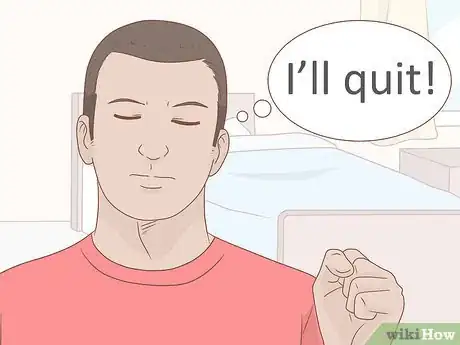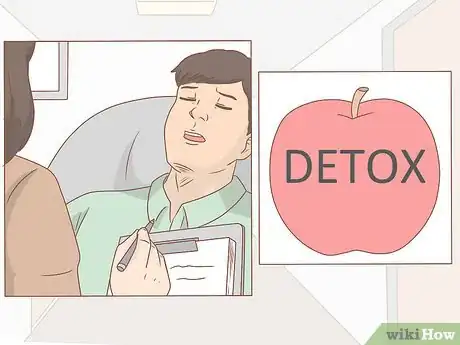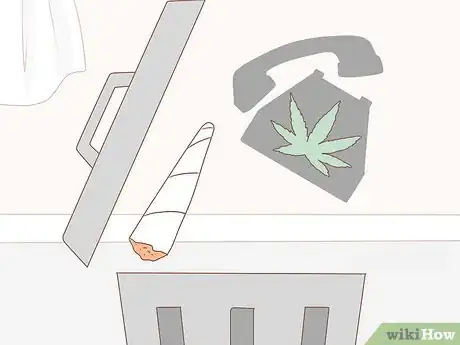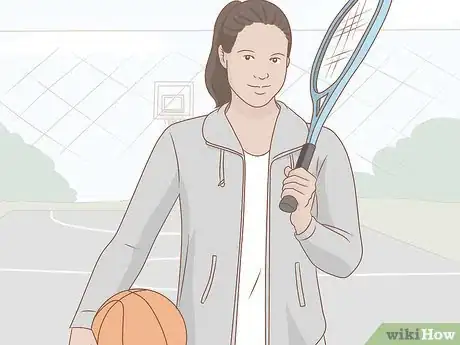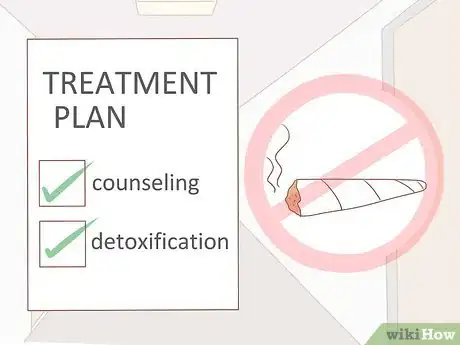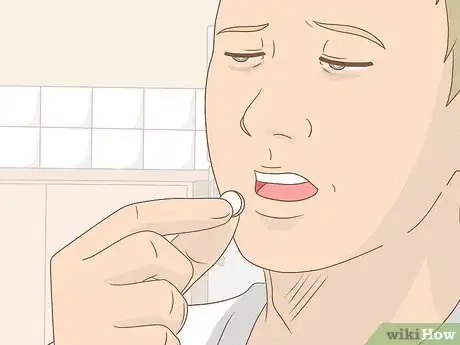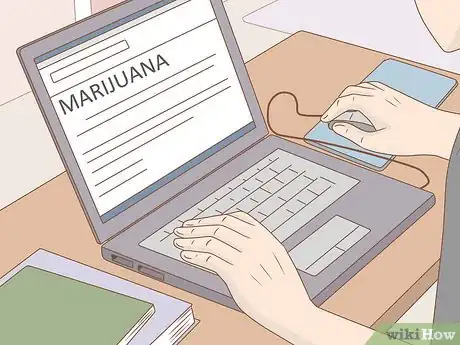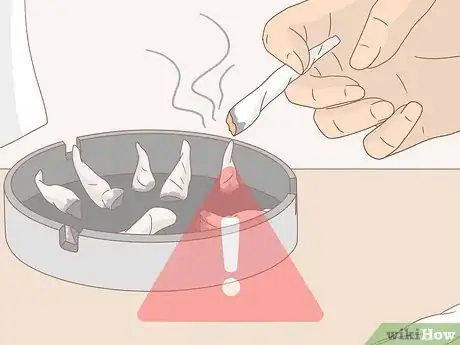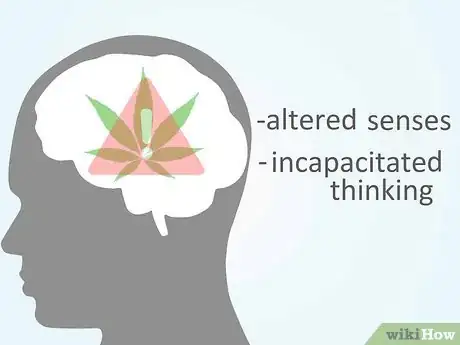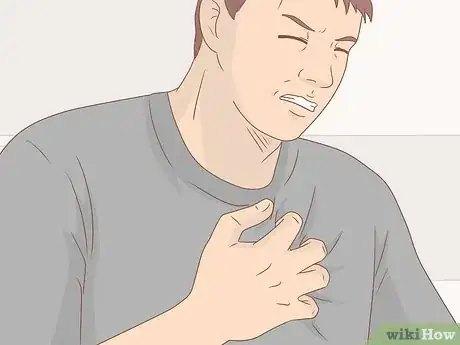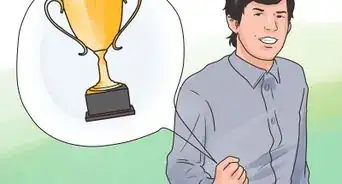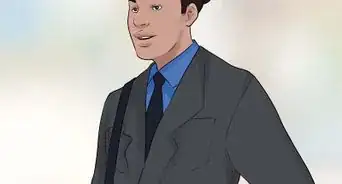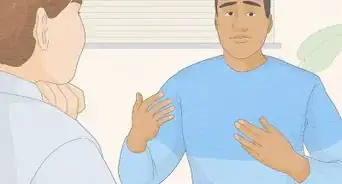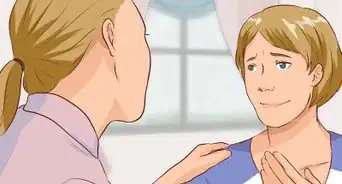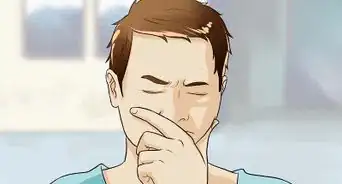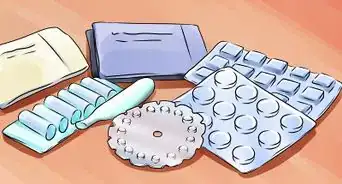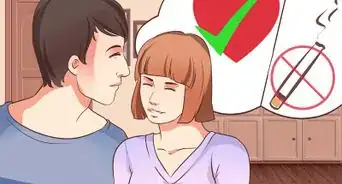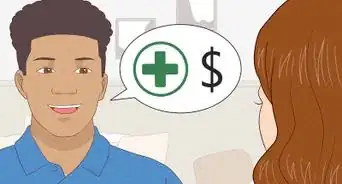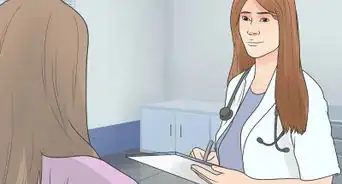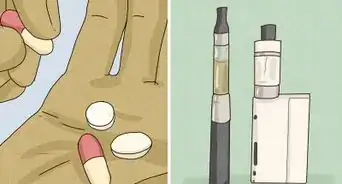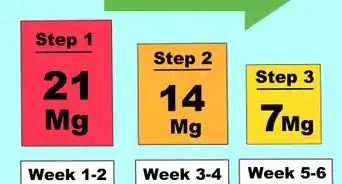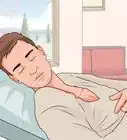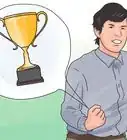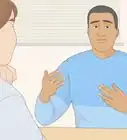This article was co-authored by Kim Chronister, PsyD. Dr. Kim Chronister is a Licensed Clinical Psychologist. She specializes in helping people struggling with substance abuse, relationship problems, eating disorders, and personality disorders. Dr. Chronister has contributed to and appeared on Access Hollywood, Investigation Discovery, and NBC News. She is the author of “Peak Mindset” and “FitMentality.” She holds an MA in Clinical Psychology and a Doctor of Psychology (PsyD) from Alliant International University.
There are 15 references cited in this article, which can be found at the bottom of the page.
This article has been viewed 64,778 times.
Many people consume marijuana for medical and recreational purposes. Although marijuana has a much lower rate of addiction than other drugs such as cocaine, over time “pot” can overstimulate the your nervous system and lead to dependence on the drug. Irrespective of whether or not you are addicted, quitting marijuana use can benefit your overall well-being.[1]
Steps
Giving Up Marijuana
-
1Make the decision to quit. Make an honest assessment of your marijuana use by asking questions about how much and often you need to use the drug. These questions can help you to more easily make the decision to quit using the drug.[2]
- Being doubtful about your habit could make it difficult to quit, even if you know it’s the best decision for you.[3]
- It is easy to downplay or underestimate your own level of dependence on marijuana. Ask a friend or family member for an independent opinion of your use.[4]
- Surrounding yourself with a different group of people may help you realize the extent of your use.[5]
-
2See a medical professional. If you’ve decided to quit using marijuana, you may feel confused about the most effective way to do this. Schedule an appointment with your doctor or another medical professional to talk about your decision to quit marijuana and your options for treatment.[6] It is best to ask for a health provider that specializes in substance abuse.
- Medical professionals who can help you include your primary care physician, a physician who specializes in drug addiction, a licensed drug and alcohol counselor, as well as a psychiatrist or psychologist.[7]
- Your primary care physician may refer to an internist or other doctor that specializes in drug addiction.[8] You may additionally want to see a mental health professional to help you cope with the emotional aspects of quitting.[9]
- Be completely honest with your doctor(s) about your drug use. This can help her formulate the most effective treatment plan for you.[10]
- Take a list of any medications, vitamins, supplements or other illegal drugs that you are taking. Remember, your doctor is there to help you, so honesty is important.[11]
- Ask your doctor about different treatment options and educating yourself about marijuana use.[12]
- Expect your doctor to ask specific questions about your use, prior attempts to quit, withdrawal and your support system.[13]
Advertisement -
3Formulate a treatment plan. You and your doctor can formulate a treatment plan that best suits you. Make sure to choose an option or options with which you feel most comfortable.[14] Some of the different types of treatment include:
- Chemical dependence treatment programs. These usually offer therapy sessions to cope with addiction and prevent relapse and can be in-patient, residential, or out-patient.
- Detoxification or withdrawal therapy. This option can help you quickly and safely stop smoking marijuana as an in-patient, residential patient, or out-patient.
- Counseling, which is also called talk therapy. This treatment can help you cope with drug cravings and suggests strategies to prevent relapse. Counseling may also help repair relationships damaged as a result of your use.
- Self-help groups, that often employ a 12-step method. A counselor or therapist can often help you find a local chapter of a relevant self-help group.[15]
- A combination of these treatments may be the best way to quit your marijuana habit.
-
4Lean on your family and friends for help. It’s important to your treatment to have a strong support system outside of medical professionals. Good friends and family members can help you get through difficult times, such as withdrawal, and may keep you from relapsing.[16]
-
5Limit exposure to temptations. Get rid of or limit exposure to elements in your life that remind or tempt you to smoke pot. This can help minimize your risk for relapsing.[20]
- Throw away or flush any marijuana you have remaining at your home or other location such as gym locker. Don’t think about the money you spent, but that you’re doing something for your health. Avoid the temptation of selling it, which is illegal.
- Delete the names of any dealers from your phone. This may mean limiting how much time you spend with certain friends, especially if they are dealers or users.
-
6Avoid high-risk situations. Certain situations may make you more prone to relapse. Stay away from places and persons you know may try and get you to use again.[21]
- Avoid parties, bars, or other social settings where you know people are using. If you don’t want people to know why, simply say “I’m sorry but I already made other plans that day.”[22]
- Spend time with friends who consume marijuana in a place where there is no temptation to use. You can ask your friends to not bring any pot with them because you’re trying to quit.[23]
-
7Explore different activities. In all likelihood, you have other interests and activities beyond marijuana. Consider spending more time doing those activities or explore new options. This may help distract you from withdrawal symptoms or the temptation to use again.[24]
-
8Commit to your treatment plan. It’s of absolute importance that you stick to the treatment plan you and your doctor formulate. Although you may feel that smoking marijuana again can relieve symptoms of withdrawal or may not really hurt you, deviating from your plan may have serious health and legal consequences for you.[25]
-
9Recognize and control the symptoms of withdrawal. It is not uncommon to experience withdrawal when you quit using marijuana. Identifying any withdrawal symptoms you have can help you effectively control them and minimize the risk of relapse.[28]
- Symptoms of marijuana withdrawal include: irritability, anxiety, depression, insomnia or restlessness, fatigue, decreased appetite and weight. Secondary symptoms of withdrawal may include: stomach pain, sweating, shakiness, fever, chills, and headache.[29]
- You can control the symptoms of withdrawal through various methods including gradual reduction in use, or using medications such as lithium carbonate or bupropion. Be aware that there is only scant evidence on the psychopharmacological benefits of medications for marijuana withdrawal.
-
10Seek help if you relapse. If you relapse, seek immediate help. This can help ensure that you don’t overdose or give up no your treatment.[30]
- Call your doctor or mental health professional as soon as you realize you’ve relapsed. If you can’t get a hold of them, you can also seek emergency medical treatment at a local emergency room.[31]
- You can also speak to your sponsor, support group, or family for support if you relapse. They may be able to help you bridge the time until you can see your doctor.[32]
Understanding the Effects of Marijuana Use
-
1Educate yourself. There are many misconceptions about marijuana, which refers to the dried parts of the hemp plant. Educating yourself about marijuana use can help you more effectively understand your addiction and stick to you treatment plan.[33]
- In the United States, marijuana is the most commonly used illicit drug among different demographic groups.[34]
- Increasing medical use and the legalization of consumption in some states has created the perception that marijuana is not risky.[35]
- The only approved form of medical marijuana in the United States is two pills that contain the chemical cannabinoids, which come in pill form and are still undergoing research.[36] There have not been sufficient studies of smoking marijuana for medical purposes to establish its efficacy.[37]
-
2Be aware of the addictive potential. Many people believe that marijuana is not an addictive drug like cocaine or heroin. However, current research suggests that 1 in 11 users become addicted to the drug.[38]
- Persons who use marijuana have lower life satisfaction, poorer mental and physical health, decreased academic and career success and experience more relationship problems.[39]
-
3Recognize your risk factors. Any person can become addicted to marijuana, but there are certain risk factors that may make you more likely to develop an addiction to the drug.[40] Knowing your risk may help prevent use or relapses in you or your loved ones.[41] Risk factors for marijuana use and addiction include:
- Family history of addiction.
- Gender, men are more likely to become addicts.
- Mental health disorders
- Peer pressure.
- Unsupportive family or friends.
- Anxiety, depression, and loneliness.
- Taking other addictive drugs such as stimulants, painkillers or cocaine.[42]
-
4Acknowledge complications of use. Smoking or using marijuana can cause dangerous and damaging complications to your well-being. Acknowledging these can help minimize your risk of use or relapse or having broader health issues. Complications include:[43]
- Contracting a communicable disease such as an STD or HIV.
- Causing fatal accidents.
- Committing suicide.
- Creating problems in your family relationships or at work or school.
- Engender legal and financial problems.[44]
-
5Inform yourself about the effects of marijuana on the brain. Marijuana use presents both long- and short-term effects on your brain. This can help deter you from using in the first place or relapsing, putting your well-being in jeopardy.[45]
- Short term effects of marijuana use include: altered senses and an impaired ability to move, think, problem-solve or remember details.[46]
- Marijuana also presents long-term effects on the brain, especially in young people. These include: incapacitated thinking, memory and learning functions, and inhibit brain development.[47] It can also present problems with attention, organization, and planning.[48]
-
6Review the physical effects of marijuana use. In addition to the neurological impact of marijuana use, there are physical effects that can severely damage your physical health.[49] This may help reinforce your treatment and the reasons why you want to quit. Marijuana use can:
- Create breathing problems similar to those of smokers, including lung cancer.
- Increase your heart rate and chance of heart attack.
- Cause disabilities in your unborn baby if you are pregnant.
- Cause hallucinations and paranoia, and exacerbate schizophrenia.[50]
- Affect blood sugar, which could be dangerous for diabetics.
- Decrease your blood pressure.
- Increase eye pressure or dry out eyes.[51]
- Marijuana can also increase the risk of bleeding when using certain medications including aspirin, anticoagulants, and nonsteroidal anti-inflammatory drugs like ibuprofen and naproxen sodium.[52]
Warnings
- Marijuana is an illegal substance. Possession, being under the influence, or distribution is a serious criminal offense in many countries.⧼thumbs_response⧽
Things You'll Need
- Willpower
- A support system
- A positive outlook
References
- ↑ https://www.drugabuse.gov/publications/research-reports/marijuana/marijuana-addictive
- ↑ http://www.mayoclinic.org/diseases-conditions/drug-addiction/basics/preparing-for-your-appointment/con-20020970
- ↑ http://www.mayoclinic.org/diseases-conditions/drug-addiction/basics/preparing-for-your-appointment/con-20020970
- ↑ http://www.mayoclinic.org/diseases-conditions/drug-addiction/basics/preparing-for-your-appointment/con-20020970
- ↑ http://www.mayoclinic.org/diseases-conditions/drug-addiction/basics/preparing-for-your-appointment/con-20020970
- ↑ http://www.mayoclinic.org/diseases-conditions/drug-addiction/basics/preparing-for-your-appointment/con-20020970
- ↑ http://www.mayoclinic.org/diseases-conditions/drug-addiction/basics/preparing-for-your-appointment/con-20020970
- ↑ http://www.mayoclinic.org/diseases-conditions/drug-addiction/basics/preparing-for-your-appointment/con-20020970
- ↑ http://www.mayoclinic.org/diseases-conditions/drug-addiction/basics/preparing-for-your-appointment/con-20020970
- ↑ http://www.mayoclinic.org/diseases-conditions/drug-addiction/basics/preparing-for-your-appointment/con-20020970
- ↑ http://www.mayoclinic.org/diseases-conditions/drug-addiction/basics/preparing-for-your-appointment/con-20020970
- ↑ http://www.mayoclinic.org/diseases-conditions/drug-addiction/basics/preparing-for-your-appointment/con-20020970
- ↑ http://www.mayoclinic.org/diseases-conditions/drug-addiction/basics/preparing-for-your-appointment/con-20020970
- ↑ http://www.mayoclinic.org/diseases-conditions/drug-addiction/basics/treatment/con-20020970
- ↑ http://www.mayoclinic.org/diseases-conditions/drug-addiction/basics/treatment/con-20020970
- ↑ http://www.mayoclinic.org/diseases-conditions/drug-addiction/basics/treatment/con-20020970
- ↑ http://www.mayoclinic.org/diseases-conditions/drug-addiction/basics/treatment/con-20020970
- ↑ http://www.mayoclinic.org/diseases-conditions/drug-addiction/basics/coping-support/con-20020970
- ↑ http://www.mayoclinic.org/diseases-conditions/drug-addiction/basics/coping-support/con-20020970
- ↑ http://www.mayoclinic.org/diseases-conditions/drug-addiction/basics/prevention/con-20020970
- ↑ http://www.mayoclinic.org/diseases-conditions/drug-addiction/basics/prevention/con-20020970
- ↑ http://www.mayoclinic.org/diseases-conditions/drug-addiction/basics/prevention/con-20020970
- ↑ http://www.mayoclinic.org/diseases-conditions/drug-addiction/basics/prevention/con-20020970
- ↑ http://www.mayoclinic.org/diseases-conditions/drug-addiction/basics/prevention/con-20020970
- ↑ http://www.mayoclinic.org/diseases-conditions/drug-addiction/basics/prevention/con-20020970
- ↑ http://www.mayoclinic.org/diseases-conditions/drug-addiction/basics/prevention/con-20020970
- ↑ http://www.mayoclinic.org/diseases-conditions/drug-addiction/basics/prevention/con-20020970
- ↑ https://teens.drugabuse.gov/blog/post/marijuana-withdrawal-real
- ↑ https://teens.drugabuse.gov/blog/post/marijuana-withdrawal-real
- ↑ http://www.mayoclinic.org/diseases-conditions/drug-addiction/basics/prevention/con-20020970
- ↑ http://www.mayoclinic.org/diseases-conditions/drug-addiction/basics/prevention/con-20020970
- ↑ http://www.mayoclinic.org/diseases-conditions/drug-addiction/basics/prevention/con-20020970
- ↑ https://www.drugabuse.gov/publications/drugfacts/marijuana
- ↑ https://www.drugabuse.gov/publications/drugfacts/marijuana
- ↑ https://www.drugabuse.gov/publications/drugfacts/marijuana
- ↑ https://www.drugabuse.gov/publications/drugfacts/marijuana-medicine
- ↑ https://www.drugabuse.gov/publications/drugfacts/marijuana-medicine
- ↑ https://www.drugabuse.gov/publications/drugfacts/marijuana
- ↑ https://www.drugabuse.gov/publications/drugfacts/marijuana
- ↑ http://www.mayoclinic.org/diseases-conditions/drug-addiction/basics/risk-factors/con-20020970
- ↑ http://www.mayoclinic.org/diseases-conditions/drug-addiction/basics/risk-factors/con-20020970
- ↑ http://www.mayoclinic.org/diseases-conditions/drug-addiction/basics/risk-factors/con-20020970
- ↑ http://www.mayoclinic.org/diseases-conditions/drug-addiction/basics/complications/con-20020970
- ↑ http://www.mayoclinic.org/diseases-conditions/drug-addiction/basics/complications/con-20020970
- ↑ https://www.drugabuse.gov/publications/drugfacts/marijuana
- ↑ https://www.drugabuse.gov/publications/drugfacts/marijuana
- ↑ https://www.drugabuse.gov/publications/drugfacts/marijuana
- ↑ http://www.mayoclinic.org/drugs-supplements/marijuana/safety/hrb-20059701
- ↑ https://www.drugabuse.gov/publications/drugfacts/marijuana
- ↑ https://www.drugabuse.gov/publications/drugfacts/marijuana
- ↑ http://www.mayoclinic.org/drugs-supplements/marijuana/safety/hrb-20059701
- ↑ http://www.mayoclinic.org/drugs-supplements/marijuana/interactions/hrb-20059701
